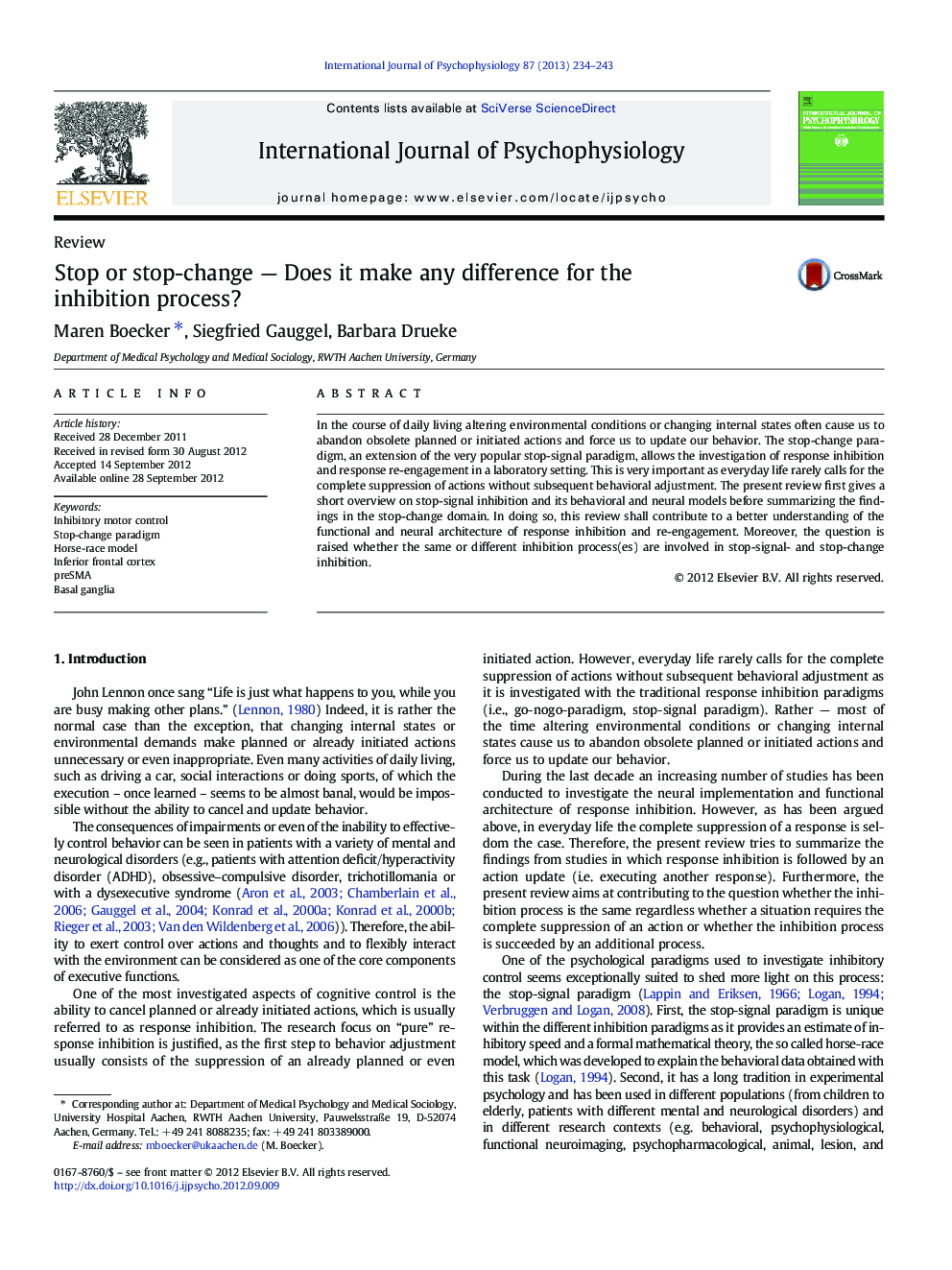| Article ID | Journal | Published Year | Pages | File Type |
|---|---|---|---|---|
| 930076 | International Journal of Psychophysiology | 2013 | 10 Pages |
In the course of daily living altering environmental conditions or changing internal states often cause us to abandon obsolete planned or initiated actions and force us to update our behavior. The stop-change paradigm, an extension of the very popular stop-signal paradigm, allows the investigation of response inhibition and response re-engagement in a laboratory setting. This is very important as everyday life rarely calls for the complete suppression of actions without subsequent behavioral adjustment. The present review first gives a short overview on stop-signal inhibition and its behavioral and neural models before summarizing the findings in the stop-change domain. In doing so, this review shall contribute to a better understanding of the functional and neural architecture of response inhibition and re-engagement. Moreover, the question is raised whether the same or different inhibition process(es) are involved in stop-signal- and stop-change inhibition.
► Current models of stop-signal inhibition are reviewed. ► An overview on studies using the stop-change paradigm is given. ► The same inhibition process seems to be used in stop-signal- and stop-change tasks.
